Pagodas & Temples along Ho Chi Minh City’s Canals – Who Knew? Part 2
In my July 2020 chronicle, “Canal Life in Ho Chi Minh City, Who Knew?” here (which, if you haven’t already read (huh?) please do, as this chronicle will make a lot more sense), I remarked that there’s a surprising number of pagodas and temples strung along the Nhieu Loc-Thi Nghe Canal, a major urban regeneration project running for 10km through central Ho Chi Minh City, that took two decades to complete.
Even in the small section of the Nhieu Loc-Thi Nghe Canal that I’m covering, my so-called 'posh neighbourhood' where I reside – roughly from Le Van Sy Bridge, in District 3, to Dien Bien Phu 2 Bridge, in Binh Thanh District – there seems to be a disproportionate amount of pagodas and temples. Located along Truong Sa and Hoang Sa, the two meandering streets running parallel to the canal, there are literally more than you can shake a bamboo stick at. And all within strolling distance of my canal-side abode. Not just a posh neighbourhood, also, evidently pretty sacred as well, mere footsteps from divine intervention.
And I’ve yet had time to check out the rest of the worshipping sites, including churches, a block in from the canal (I can spot their spires, crosses and pagoda tops), let alone all the many offerings I’m sure that exist beyond my relatively upscale neck of the woods.
Anyway, each of these stunning Buddhist sites featured here differ in their individual way; an eclectic bunch in terms of age, sect variations, architectural design and size – from Chinese and Khmer to Japanese-influenced and from minuscule roadside shrines to the city’s largest pagoda, Chùa Vĩnh Nghiêm – the latter, so important, I haven’t included here, but dedicated an entire chronicle on it, “On the Shelf @ Vĩnh Nghiêm Pagoda” here
Today, these stunning and culturally-rich worshipping
sites provide an alternative place to visit in Ho Chi Minh City, a spiritual
oasis for the living and a tranquil, final resting place for the dead. They all
look their finest post-dusk, taking on a magical, glow-in-the dark aura, gorgeously
illuminated with lighting that includes garish-hued neon lights. Yep, such is
the Saigonese predilection for neon lights that this even extends to halo’s, shrines and altars.
Apart from Chùa Vĩnh Nghiêm, most
foreigners don’t seem to be aware about this neighbourhood’s under-the-radar pagodas
and temples, so you’re unlikely to find them listed in travel guidebooks (which
I used to research, back in the day), or documented on social media. Which is
good news, as that means no big tour groups rushing in tsunami-style disturbing
the peace, or equally tiresome Instagrammer jostling for a selfie. Save for
the odd local worshipper, caretaker and resident nuns and monks, you’ll most likely have these listed sites to yourself and
can snap away to your heart’s content.
In my other Jaded Empress chronicles, I end with a disclaimer, covering any potential errors I may have made originating from my research. But for this article, well, I should be so lucky! I can hardly find any background information on my neighbourhood pagodas and temples. And if I do find any, it’s mostly written in Vietnamese. I don’t even know if I’ve got the names correct, with some, I’m not aware of the English translation, or even whether they’re officially classed as a pagoda (chua, for worshipping Buddha), or a temple (den, imbued with Taoist and Confucian elements, dedicated not just to Buddha, but other Gods, national heroes or guardian spirits). So apologies if this Jade(d) Empress has inadvertently made errors, perhaps be so good to enlighten her Highness in the comments box!
Hopefully the images here speak louder than the text and reiterate my case – what an unexpected treasure trove to discover amongst the inner-urban sprawl and of all places, along the redeveloped canal banks in my 'hood!
#1 Chùa Pháp Hoa (Lotus Temple)
A short stagger
from my neighbourhood abode, magnificent Chua Phap Hoa, or Lotus Temple, is surely one of the canal’s most impressive religious
sites and unusually, fronting the canal’s promenade walkway – as opposed to
across the street, like the rest of them.
If this was founded in 1928, the multiple-tiered Lotus Temple must have been engulfed by the slums and abject poverty that was part of life along these canal banks, as detailed before. Thus, the temple name is hardly coincidental! The lotus is probably the most spiritual flower on earth, with history and rich symbolism dating back thousands of years. Important in many cultures, but especially in Buddhism, the lotus flower is revered as a symbol of rebirth, self-regeneration and spiritual enlightenment.
In Vietnam, the lotus is visibly widespread in lakes and ponds, taking on religious significance in pagodas, temples and important site,s such as the Emperor mausoleums in Hue. And it’s Vietnam’s national flower for good reason(s): regarded amongst others, as a symbol of optimism for the future, at night the flower folds shut, submerges underwater and rises to open at sunrise (why the lotus is also known as, the ‘flower of the dawn.')
Anyway, I digress. Apparently, during the Indochina and Vietnam
wars, a number of Viet Kong soldiers, AKA ‘revolutionary cadres,’ plotted in secret
within the temple walls, there’s a secret bunker built around 1945,
a tomb dedicated to the monk-soldier, Thien
Chieu, and a stele house commemorating the fall of elite soldiers. In 1965, Lotus
Temple was restored and deservedly awarded heritage status.
With its rich dark woods, majestic architectural style both inside and out and ornate decor, this stunning and palatial-sized temple reminds me of the traditional pagoda’s up in Hanoi and the north, where I happily lived for near-on five years.
Just left of the upper main hall, with its weathered old dark woods and classical-style, lacquered poem boards, the atmospheric side chamber is equally evocative of northern Vietnamese pagodas; wooden cabinets either side are stacked with traditional blue and white ceramic burial urns.
And just footsteps away, from the broad, breezy top balcony, enjoy the scenic views across the canal ......
If you arrive at dusk, the upper main hall and the golden statues should all be beautifully lit-up and more than likely, attended by Buddhist lay nuns and monks repeatedly chanting mantras. Even from outside, you'll be able to hear the hypnotic toll of the hanging prayer bell and the evening prayer service, as it's broadcast out on speakers for all to hear.
And all those colourful hanging lanterns all aglow in the fading light makes this waterside temple look even more stunningly pretty.... like something out of an Oriental fairytale.
#2 Chua Van Tho Co Tu (Longevity Temple)
I’ve scant information on Van Tho Pagoda, also known as Longevity Temple; apparently, it was founded around the beginning of the twentieth century "in a new, muddy land, with only a few houses gathered around the temple" and rebuilt in 1942 and then 2000 (?).
As you can see, this towering high-walled Buddhist compound - somewhat evoking a gothic-meets- ancient Chinese style- is spectacular and once again, something you wouldn’t expect to find in amongst an unassuming local neighbourhood along the canal banks.
From the vaulted, grandiose and whimsical exteriors of ornate, tiered towers and pillars with yellow parallel boards carved with Chinese characters, I anticipated a pagoda-temple of key significance, overrun with visitors and worshippers.

Van Tho's dimly-lit interiors however didn’t quite match up to the magnificent façade, which is perhaps a blessing in disguise; somewhat refreshingly, the sleepy afternoon I stopped by there were few people here - I almost felt like I was intruding. Seems this temple’s main function is primarily as a peaceful resting place for the dead and a vast funerary vault, where the living, the few visitors I saw, come to pay their respects to dearly departed loved ones. Perhaps also the residence for monks and nuns, their frugal living quarters off to the side.
Once inside this cavernous site, you enter an atmospheric main hall with centrestage Buddha Shakyamuni statue, sat cross-legged on a lotus flower; the front table section also has the statues of Amitabha Tam Ton, Bodhisattva Maitreya, Bodhisattva Avalokitesvara and Bodhisattva Ksitigarbha.
So it goes, there are several ancient wooden statues stood around the pagoda: including Amitabha Buddha statue and Dharma protector statue. I passed this marvelous display of traditional carved wooden statuettes on the upper floor.....
where there's a lengthy
side chamber, that at first glance resembles an archaic library. On closer inspection, however, the never-ending lines of dusty shelves are the resting place of dozens
upon dozens of funerary tablets and ceramic burial urns. Watched over by gatekeepers (albeit scrolling through their Smartphone messages), visitors offer up incense and prayers at small shrines.
#3 Chua Hai Duc
You can’t exactly miss this frothy concoction of a pagoda - temple, with its ornamentally- inspired, brightly-coloured façade, festooned with yellow and pink lanterns....
In contrast to Chùa Pháp Hoa, as detailed above, Chua Hai Duc looks distinctly Southern Vietnamese in its architectural style, but with at least one exception: the first-floor Dinh, to the left of the main building, above a Che shop ( Vietnamese sweet dessert-drink). More common in the north, a Dinh is a community hall, or house-temple, that doubles-up for community use and honouring heroes and founding patrons. When this dinh is in use and the shutters flung open, visible from the road, the interiors of glowing golden statues and carved dark woods resembles something from the back streets of Hanoi.
Anyway enter
through big wooden doors to a charming
garden courtyard, flanked by somewhat down-at-heel monks and nuns living quarters and a decorative,
but out-of-bounds pagoda tower.
Within, there’s not a huge amount to see; the star of the show is the stunning, upper-floor main hall, accessed by a stone stairwell and passing these two charming gentlemen....
Within the hall, you’ll find a golden Buddhist-haloed statue surrounded by a riotously, almost psychedelic backdrop, abundance of gorgeous floral arrangements and central front altar piled with offerings of plates of fruit, snacks and incense.
Beyond, out in the broad open-air veranda, pomelo fruit nurtured on potted mini-trees look so ripe and heavy, they look ready to drop any minute off their branches.
The highlight for me, however, is the street-side central tower, where an elevated gallery directly facing the canal is dedicated to a statue of Quan Am. It was that gentle lay nun who led me here, kind enough to point out (through sign language) that I was permitted to ascend the stairs to this cramped deck, to pay respects to Quan Am, the female 'Goddess of Mercy.'
Which I did.
Whatever the name, Quan Am is considered a descendant of sorts of the original Buddhist ‘Bodhisattva of Compassion,’ Avolokiteshvara. A common depiction is of a graceful woman holding a willow branch, which represents healing and / or a vase turned upside down (usually in the left hand), or sometimes pouring water, signifying how She actively cleanses and purifies with a fortuitous symbol. As well as many names, Quan Am even takes on many forms, as revealed in #5, Quan Âm Tu Viện Temple!
And Quan Am (literally, ‘Observer of the cries of the world’), is regarded as the champion of the unfortunate, the sick, the disabled, the poor, those in trouble and so on, who promises to extend miraculous powers of assistance to all those who pray to this Goddess with their individual needs and requests. Devotees also look to Quan Am for guidance, fertility and protection.
Which explains why, after that visit, when I exercise along the canal walkway, like other devotees, I stop in my tracks and pay homage to the Goddess Quan Am, who transcends the traffic and appears to hover across the road and come late afternoon, like many statues, is illuminated with a neon halo. For a few moments, I block out the motorbike roar on busy Truong Sa and locals jogging past and stand still in my running gear, hands clasped and one eye open, directly gazing up at Quan Am, as I quickly run through my laundry list of prayers.
(Chua Hai Duc, #355 Trường Sa, Phú Nhuận District)
#4 Chùa Candaransi (Candaransi Temple)
Whooooooaaaaa! Didn’t expect to see this here, or in fact anywhere in Ho Chi Minh City – in complete contrast to the canal’s other religious sites and Vietnam’s usual suspects of Chinese-influenced pagodas.
In Vietnam, Theravada Buddhism is often associated with the Khmer Buddhist ethnic group in the south of the country. As there aren’t many Khmer folk in Ho Chi Minh City – more in the Mekong Delta region, in the southwest – Khmer Buddhist activities are rarely noted to the point of being ignored.
Another oldie, founded in 1947, Chùa Candaransi is considered to be Ho Chi Minh City's maiden temple built in the first half of the 20th century, dedicated to southern Vietnam’s Khmer Buddhists and supporting their cultural and spiritual values while doing business or living here. Today, there are in fact just a couple of monastery-temples of the Khmer Buddhism sect in HCMC.
Visitors moan online that Candaransi Temple is boring, but I beg to differ; as already stated, it’s unusual to find Khmer Buddhist temples in Vietnam – apart from the Mekong Delta, where I’ve visited one or two lovelies – and they are markedly different from the glut of religious sites in the city.
Stroll through the Khmer-style golden entrance, guarded by not just two stone golden lions, but also dogs of the non-spiritual and non-stone variety, to enter a small compound, where a cluster of buildings – numbering a Khmer Buddhist study and research rooms, prayer halls and monks living quarters – flank a courtyard. You may encounter monks wafting around in their saffron-hued robes, or perhaps, heading out on Grab motorbikes.....
Don’t miss the stand-alone temple hall, positioned on your left as you enter; striking for its gold decoration and exterior wall covered with a brightly-coloured, 3-D decorative mural.
Unlike others, this humble temple hall is more stunning inside than out!
revealing interiors resembling a jaw-dropping art gallery, which few would know about, with exquisite, hand-painted wall and ceiling murals depicting Khmer-influenced religious scenes.
flanked by golden statues that would look more at home in Bangkok’s Buddhist Wat's.
#5 Quan Âm Tu Viện Temple
With
its impressive, ornamental façade and ample-sized compound setting, visitors might
find this multi-level, yellow-hued temple-monastery grander than it actually is.
Unless, again, I’m missing something? (probably)
Once within, on your right, have a look at the surreal, almost theme-like Buddha garden (but hey, don't walk in it)........
before entering the main point of interest: a functional temple hall decorated with hanging Thang-ka’s and dominated by a dazzling golden statue of Quan Am, a Bodhisattva and ‘Goddess of Mercy.’ As the name implies, this temple is dedicated to Quan Am and as discussed in #3 Chua Hai Duc above, this is Quan Am ‘Avolokiteshvara,’ taking on another form; here, a dramatic one, with a ‘one thousand arms and one thousand faces’ surrounded by a golden aura.
From what I understand, this multiple arm and face depiction signifies the power of all Gods, Quan Am’s ability to see and help all sentient beings and with its various Buddhas embedded in the crown, the wisdom of all Buddhas.
Positioned in front of a wall of floating mini-Buddhas (or mini-Quan Am’s?), Quan Am is flanked by a duo of smaller-sized, golden female statues, set above a front altar almost consumed by white tiger lily blooms.
Below, to the left, is a striking seated male deity, with abundant offerings deposited at his feet.
(Quan Âm Tu Viện Temple, #384 Trường Sa, Phú Nhuận District)
#6 Chua Phap Vuong
Relatively new, built in 1969, this multi-level, slender pagoda-temple doesn’t rest in the loveliest of settings: snuck down an alleyway amongst a tangle of electricity cables at the scruffy, northern end of Truong Sa, approaching the ugly concrete flyover known as Dien Bien Phu 2 Bridge.
I wouldn’t have even known about this site, except for the orange-hued, ornately decorated dome – almost Islamic in tone and sculpted like a lotus flower – orbited with mini-me versions, poking out above a mish-mash of ugly concrete buildings.
I'm confused: is this a temple or pagoda? Who knows, but it seems very 'local' and looks more like a private home. But I'm excited to stumble upon this under-the-radar find, with its decorative, Chinese-inspired façade.
However, once inside, the ground-floor is somewhat uninspiring and the
territorial gatekeeper sat keeping watch didn’t allow me to ascend the narrow stone stairs and investigate the higher
floors – who knows what lurks up there?
(Chua Phap Vuong, #110 Truong Sa, Binh Thanh District)
#7 Unnamed shrine
Along Nhieu Loc-Thi Nghe Canal, you’ll even find the tiniest roadside shrines, like this one.....
No idea its name, nor anything else about it, but this stunning
mini-shrine is an unexpected find amid the motorbike madness approaching Bui Huu Nghia Bridge on Truong Sa, juxta-positioned next to a double-storey
bar that looks out over that same murky narrow canal as detailed in my previous canal chronicle (again, here )
Once dusk hits, though, things take on a more mystical look with an evocative scarlet glow........
(#144 Truong Sa, Binh Thanh District)


















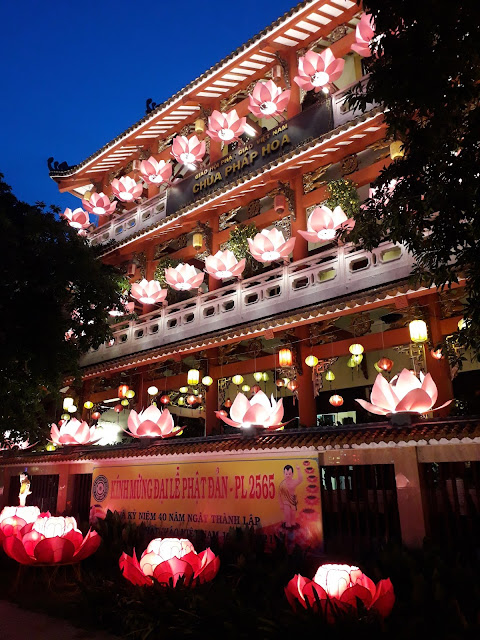






























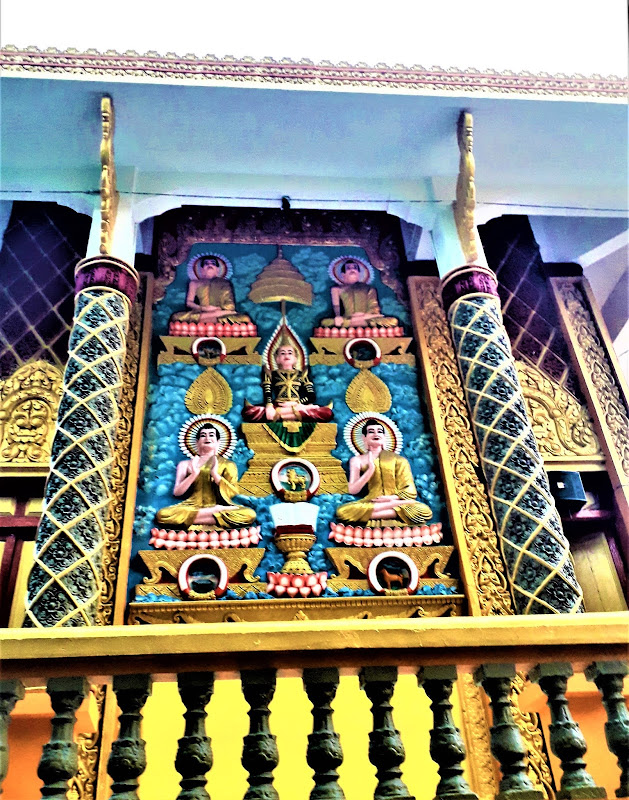

































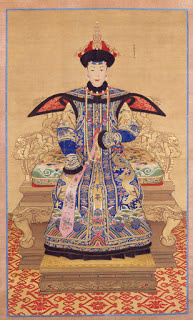

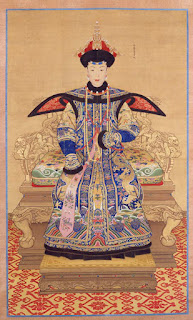

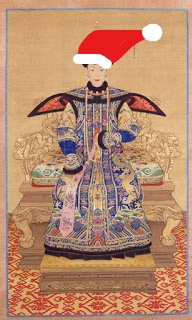



Comments
Post a Comment